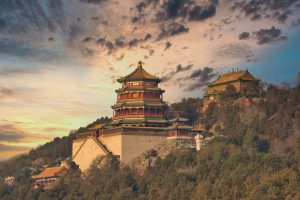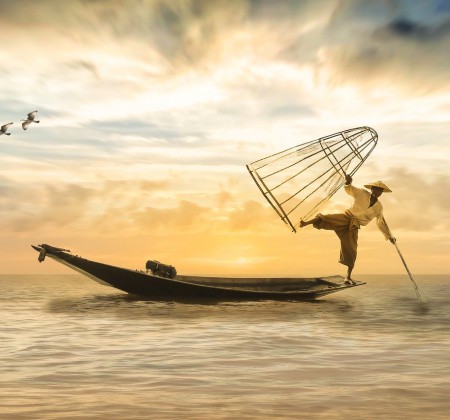Does It Rain in Beijing?
Beijing is located in a temperate monsoon climate, which is characterized by high temperature and rainy summer. It rains about 70 days a year in Beijing.
In Which Month Does It Rain in Beijing?
Beijing has a lot of rain in July and January.
The main characteristics of the whole year are as follows: more rain in summer and less rain in autumn and winter.
Summer (June-August): hot and rainy is a prominent feature. The average temperature in July is about 26 degrees in 100 areas of the plain. The precipitation is between 400 mm and 600 mm, accounting for about 75% of the annual precipitation, and the precipitation is unevenly distributed. The areas around Zaoshulin, Badaohe, Fangshan Manshui River in Huairou County, and Luoying, Haizi and Jiangjunguan in Pinggu Town are rainy areas.
The seasonal precipitation is more than 600-700 mm. In the mountains to the north of Kangzhuang and Zhangshanying in the northwest, the seasonal precipitation is less than 400 mm, and the precipitation intensity is strong, often several rainstorms or one or two rainstorms are equivalent to monthly precipitation.
Autumn (September-November): suitable for cold and warm, sunny and warm with little rain are the characteristics of this season. The seasonal precipitation accounts for only 14% of the annual precipitation. The rapid cooling makes the duration of autumn shorter than that of spring, and winter comes when a strong cold air moves south at the end of autumn.
Winter (December-February): cold and dry, windy and less snowy, which is the characteristic of this season.
The average monthly temperature is below zero, and the precipitation is only about 10 mm, accounting for 2% of the annual precipitation. strong winds and cold waves occur every year, but the intensity and frequency are different.
Characteristics of Rainfall in Beijing
Large Variability of Precipitation
The annual distribution of precipitation in Beijing is uneven and varies greatly from year to year.
According to statistics, the average rainfall in Beijing for many years is 585 mm, and the rainfall in the flood season (June-September) accounts for about 85% of the annual precipitation, and the precipitation in the flood season is often concentrated in several torrential rains in late July and early August, which is very easy to cause floods.
However, there is little precipitation in spring and winter, and drought often occurs. Drought and flood occur alternately. The annual precipitation (or flood season precipitation) varies greatly from year to year, such as 242mm in 1869 and 1406 mm in 1959.
The Intensity of Rainstorm Is High and the Frequency Is Frequent
According to the statistics of rainstorm data since 1949, rainstorms with 24-hour rainfall greater than or equal to 50 mm occur an average of 5 times a year, 2 times for the youngest and 15 times for the most years.
Torrential rain is not only frequent, but also very intense, with a maximum rainfall of 150 mm in an hour, and torrential rain in which the rainfall exceeds 100 mm per hour is very common. Extreme rainstorms have occurred frequently in cities in recent years. According to statistics, there have been 88 times of rainfall with an hourly rainfall of more than 70 mm since 2004.
Uneven Distribution of Precipitation
The rainstorm center-prone area in Beijing is distributed along the Piedmont windward zone of Yanshan and Xishan, and the annual precipitation is more than 650mm ~ 700mm, among which jujube forest and Manshui River are the places where torrential rain occurs. As a result, it gradually decreases to about 500 mm in front and back of the mountain.
The famous torrential rain in the history of Beijing area has different central location, intensity and shrouded area. Serious flood disasters are often formed in the central area of the rainstorm, while in the edge of the rainy area, the disaster is relatively mild because of less precipitation, and even drought occurs because there has been no rain for a long time.
This fully shows that the regional differences of precipitation lead to different regional distribution of flood and drought disasters.
Where to Play on Rainy Days in Beijing?
Xiangshan Park
Located in Xiaoxishan in the northwest suburb of Beijing, 20 kilometers away from the city, it is a famous large mountain park with the characteristics of royal gardens.
Xiangshan Park was founded in the 26 year of Jin Dading (1186) and has a history of more than 800 years.
It was opened as a people’s Park in 1956 and has become one of the top ten parks in Beijing after nearly half a century of construction.
Xiangshan Park is rich in cultural relics and monuments, and its pavilions and pavilions are like stars scattered among the mountains and forests.
Here is “Xishan Qingxue”, one of the eight sights of Yanjing; “Biyun Temple”, a temple with architectural styles of Ming and Qing dynasties; “five hundred Luohan Hall”, which is the only remaining wooden temple in China; “Temple of Zong Jing Da Zhao”, a palace to welcome the sixth Panchen Lama; here is a quaint courtyard with Jiangnan characteristics, “Jianxinzhai”.
Here is the place where the great man of the century Mao Zedong and the CPC Central Committee first lived and worked in Peiping, the Shuangqing Villa, and here is the temporary site of the coffin of the great man of the century, Dr. Sun Yat-sen-the King Kong Throne Tower of Biyun Temple.
Xiangshan Park has steep terrain, verdant peaks and spring Peilinmao.
The main peak incense burner peak (commonly known as ghosts to see sorrow) 557 meters above sea level. People in the park live in harmony with nature, birds and insects sing and squirrels play in the gully forest.
Here, flowers bloom in spring, cool and pleasant in summer, and silver makeup in winter.
Especially in late autumn, more than 100000 trees are in full swing, majestic, and have been rated as one of the “New Sixteen scenes of Beijing”.
Summer Palace

Located in the northwest suburb of Beijing, the Summer Palace is mainly composed of Wanshou Hill and Kunming Lake.
As early as the Yuan and Ming dynasties, it became a famous tourist attraction of “spectacular China first” for its beautiful and natural pastoral scenery.
Today’s Wanshou Hill is known as Weng Mountain in the Yuan Dynasty. it is said that an old man dug up a stone urn full of treasures on the mountain.
In front of the mountain, there is a lake named Wengshan Park.
In 1292 (from the Yuan Dynasty to the 29th year of the Yuan Dynasty), the scientist Guo Shoujing excavated the Tonghui River and diverted the spring water from Changping and Xishan into the lake and poured it into the palace wall to provide water transport. Wengshan Park became a reservoir for the use of water in the capital.
From this to the Ming Dynasty, a number of influential temples have been built around the lake, among which the Dachengtian Temple on the north bank of the west of the lake is the largest, the building is magnificent, the white marble fishing platform extends into the lake, and the emperors of the Yuan Dynasty often come here for a boat trip, fishing and fishing.
During the Ming Dynasty, Wengshan Park was renamed the West Lake, “ten miles around the lake, a county resort.”
Every year, when the peach is red and the willow is green, the people in the capital take care of the old and the young to enjoy the spring outing in the West Lake.
Beijing World Park
The Beijing World Park was born to meet the growing needs of the people for spiritual life.
Deputies to the National people’s Congress, members of the Chinese people’s political Consultative Conference, and leaders at all levels from all over the country and Beijing visited the park in person. Many national leaders who visited China also visited the park in their spare time. The general public of this city and guests from all over the country love the park even more. Whether it is hot summer or severe winter, there is an endless stream of tourists.
Through the miniature landscape and colorful activities of nearly 100 places of interest on five continents, Beijing World Park shows visitors the architecture, sculpture, painting, music, dance, clothing and catering culture of all countries in the world.
So that tourists can get rich cultural enjoyment in the process of relaxed and pleasant visit.
Rainy Indoor Tourist Attractions in Beijing
There are also many indoor scenic spots in Beijing, and there are many kinds of museums. The larger ones have the National Museum. If you play carefully, it will take two or three days to see all of them.
Opposite the National Museum is the Great Hall of the people and the Chairman Mao Memorial Hall, which is also an indoor scenic spot.
Behind the Great Hall of the people is the National Grand Theater, which is well worth seeing.
In addition, Chinese art museums, military museums, museums of various specialties and former homes of celebrities can be found everywhere.
China Science and Technology Museum: located at No. 5 Beichen East Road, Chaoyang District, Beijing, the venue building is a large single square, the whole building presents a huge “Luban lock”, but also like a “Rubik’s cube”, which contains the moral of “unlocking” and “exploring secrets”.
Song Qingling’s former residence is located at No. 46 Houhai Beiyan, Xicheng District, Beijing. it was built during the reign of Emperor Kangxi in the Qing Dynasty. The garden is surrounded by living water from Shici. There are long corridors and Enboting on the lake, stones in Taihu Lake at the foot of Xishan, and a pavilion, rain-listening house and treasure pavilion on the mountain.
Matters Needing Attention for Travel on Rainy Days in Beijing
Put the map in an easy-to-hold place, such as a raincoat pocket or the top bag of a backpack, and treat it with anti-splashing water.
If you wear glasses, please wear a baseball cap with protruding front eaves and then a rain cap, which will give you a better line of sight.
Wear rain gear immediately in case of rain, do not wear it because of the light rain, it will be too late to wear it when you get drenched.
Two-piece raincoats are suitable for rain gear, and rain trousers can be supported by suspenders to prevent slippage.
Rain gear should always be placed in a convenient place, such as the side pocket of the backpack, the top pocket, or the top of the main bag.








